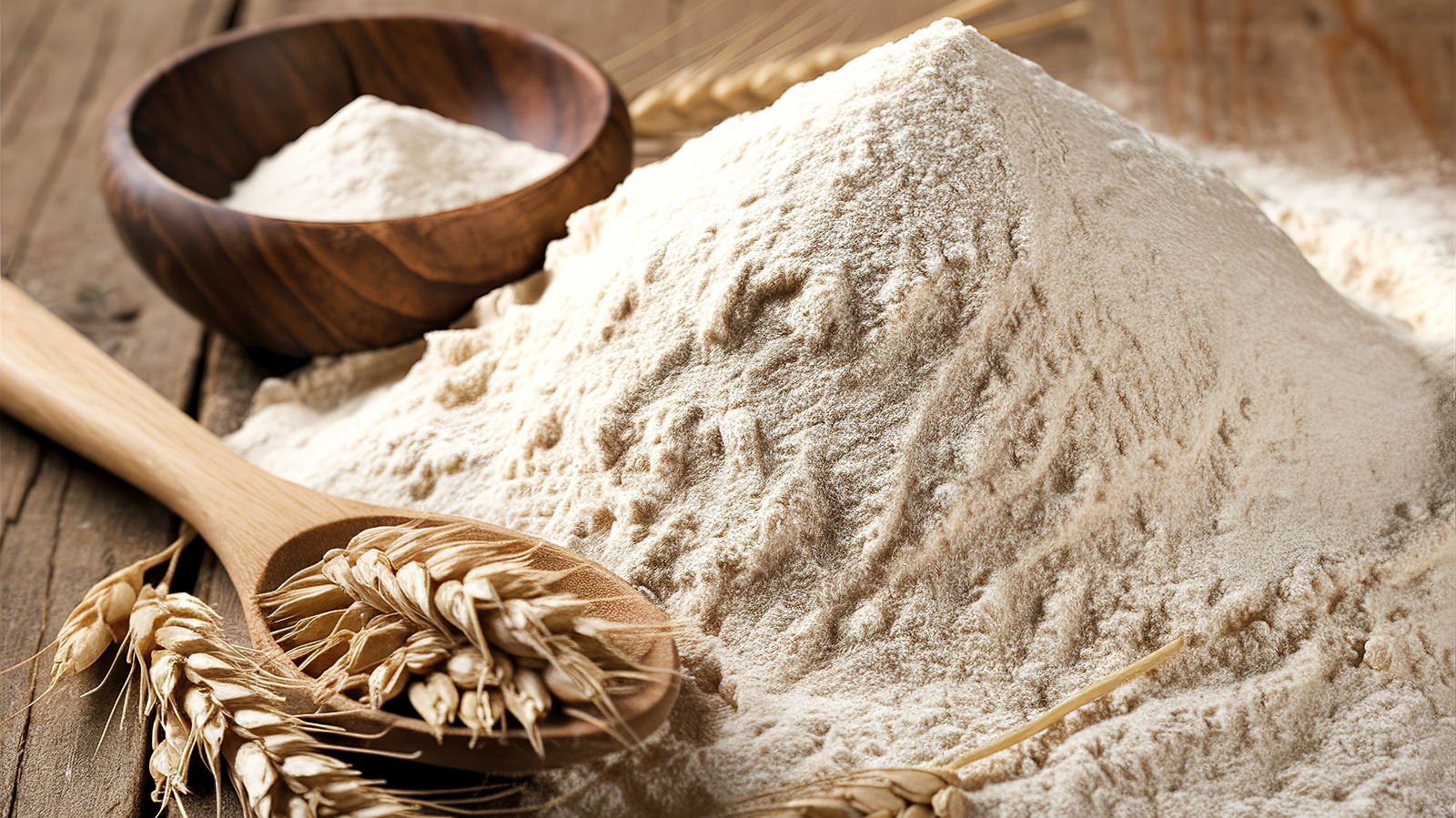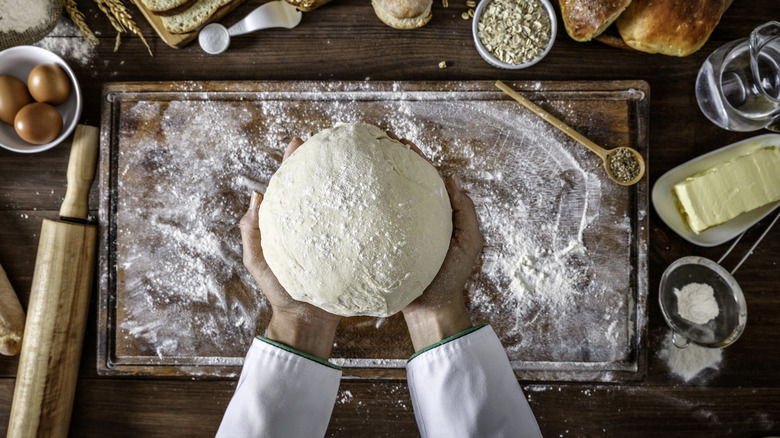Have you ever wondered why cakes are made with cake flour, or what the difference really is between all-purpose flour and bread flour? From croissants to sourdough and rye bread, baked goods are made with more than 30 different kinds of flour, and using the right flour is key to baking success. The reason flour is so important has everything to do with protein content, which is labeled in percentages.
There are two kinds of protein in flour that form gluten, which is created when flour meets wet ingredients and transforms into sticky, pliable dough. These proteins are gliadin, responsible for creating stretchy qualities; and glutenin, which contributes to elasticity. Different flours have varying amounts of glutenin and gliadin and the percentage of these two proteins present makes up protein content.
The more protein in the flour, the more gluten it will have when it’s made into dough — and the amount of gluten in dough impacts the density of your baked goods. The highest protein flour is made from whole wheat with around a 13% to 14% protein content and is used for things like bagels and artisan breads. In contrast, scones and pie crusts are made with pastry flour that has an 8% protein content.
When should you use high protein flour in baking?
Bread flour and all-purpose flour are both high-protein flour types that range from 10%-14%. Some specialty flours like Polselli Organic Italian whole wheat flour range up to 15% or 20% protein. These high-protein flours provide structure and density to breads and crusts and create a dough that is great for sturdy baked goods. High-protein flour makes a great pizza crust, especially if you use olive oil while stretching out the pizza dough. It gives breads an airy and light crumble with a decent crust, makes bagels chewy, helps along fermentation in sourdough, and is sturdy enough for homemade pasta dough.
The choice between bread flour and all-purpose flour won’t destroy your homemade bread, but you’ll notice a difference if you use a type of flour unsuited for your baking project — like using pastry flour for pizza crust. Each flour reacts a bit differently as it rises, the yeast ferments, and you get to proofing steps for your dough. You’ll notice high-protein flour is elastic and fairly easy to work with, but make sure you get proofing your high-protein dough right to create the best texture for your baked goods.





